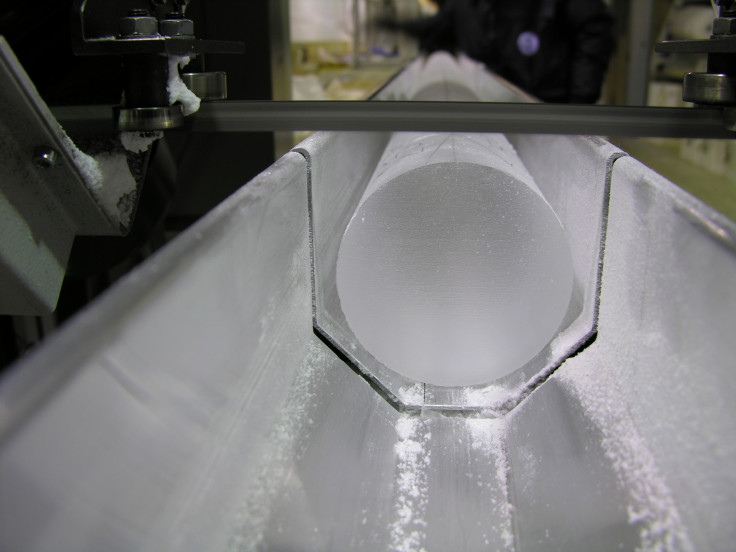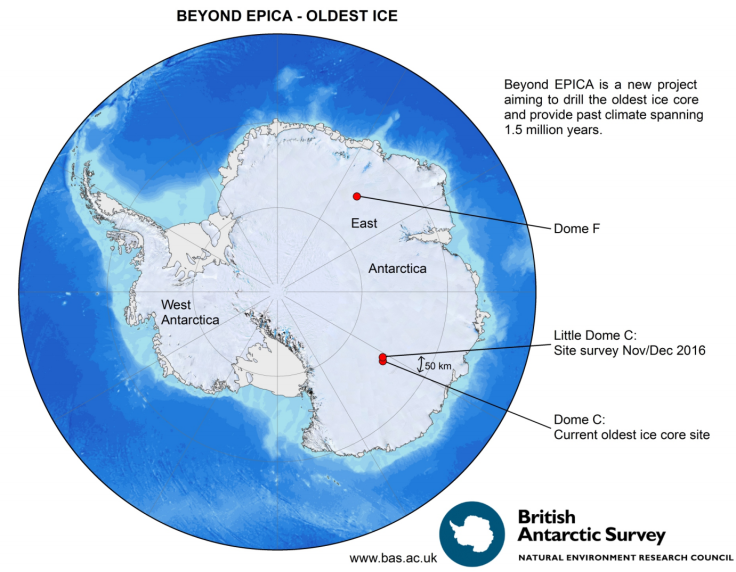Mission to find the world's oldest ice begins in Antarctic
Air bubbles trapped in the ice from 1.5 million years ago hold clues to the Earth's ancient climate.
A team of scientists is leaving for Antarctica this week to begin drilling down 3km into the surface of the East Antarctic Ice Sheet to reach ice that froze about 1.5 million years ago.
The 1.5-million-year-old ice is expected to contain tiny bubbles of air that became trapped in the ice as it froze. Analysis of this air can tell researchers about the Earth's ancient atmosphere.
In the early 2000s the team drilled an ice core from Antarctica to reveal a climate record going back 800,000 years.
"Now we want to double the length of that record to investigate an important shift in Earth's climate around one million years ago, when the planet's climate cycle between cold glacial conditions and warmer interludes changed from being dominated by a 41,000-year pattern to a 100,000 year cycle," said British Antarctic Survey ice core scientist Robert Mulvaney, who sets off for the expedition on 17 November.

The team will drill test boreholes at several sites, using radar towed behind a snow tractor to find the sites likely to have the thickest ice. The thickness of the ice sheet is one indicator that there will be very old ice at the bottom, but other factors such as snow accumulation and the temperature at the base of the sheet also affect the likelihood that the oldest ice might have survived.
Mulvaney will meet the rest of the expedition crew at Concordia Station on the Antarctic Plateau before making the 50km journey over the ice to the first site for ice drilling.
The researchers will only be working during the Antarctic summer at a site called Dome C. The team will drill at another site – Dome F – in a year's time. Dome F can only be reached by air as the distances between the stations and research sites are too large to travel over the surface.
The 1.5-million-year record of climate data that this ice could offer will improve understanding of the relationship between the Earth's atmosphere and climate, Mulvaney says.

"We need to understand the interaction between the Earth's atmosphere and climate in very different conditions in the past if we are to be sure we can predict the future climate response to increasing greenhouse gases," he says. "There is no other place on Earth that retains such a long a record of the past atmosphere other than the Antarctic ice sheet, and it is tremendously exciting to be embarking now on the journey to recover this record."
Olaf Eisen, project coordinator and glaciologist at the Alfred Wegener Institute, says: "During previous studies we determined key regions where we expect the oldest continuous ice record on Earth. Now we have to prove this and it is important that we learn as much as possible about deposition processes and the composition of the ice."
The project is expected to take several years to complete. As the 3km ice core is extracted, it will be divided up and sent to laboratories across Europe to measure the gases in the ice bubbles.
© Copyright IBTimes 2025. All rights reserved.






















